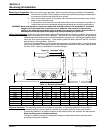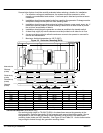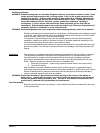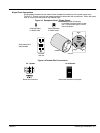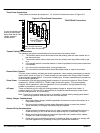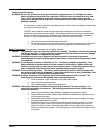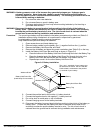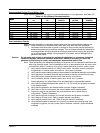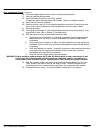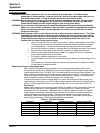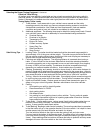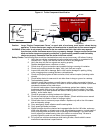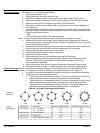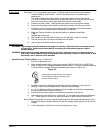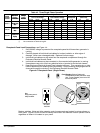
Receiving & Installation 3-9MN2417
Recommended Engine Oil and Battery Type
When replacing batteries, use only the recommended battery for your generator, see Table 3-5.
Table 3-5 Oil & Battery Recommendations
MODEL
SUMMER WINTER OIL RECOMMENDED (AMPS) COLD
MODEL
SUMMER
OIL
WINTER
OIL
OIL
CAPACITY
RECOMMENDED
BATTERY
(AMPS)
COLD
CRANKING
TS25 SAE. 20W/50 5W/30 8.6 QTS BCI Group 24 925
TS35 SAE. 20W/50 5W/30 8.5 QTS BCI Group 925
TS45 SAE. 20W/50 5W/30 11.8 QTS BCI Group 925
TS60 SAE. 20W/50 5W/30 11.8 QTS BCI Group 925
TS80 SAE. 20W/50 5W/30 14.0 QTS BCI Group 925
TS130 SAE. 20W/50 5W/30 18.0 QTS BCI Group (2) 750
TS175 SAE. 20W/50 5W/30 34.0 QTS BCI Group (2) 750
TS250 SAE. 20W/50 5W/30 34.0 QTS BCI Group (2) 750
TS400 SAE. 20W/50 5W/30 45.0 QTS BCI Group (2) 750
Post Installation Checks
When the initial installation is complete, these checks must be performed before starting the
engine. These checks are not required before each start, only after the initial installation.
1. Generators that have been in transit or storage for long periods may be subjected to
extreme temperature and moisture changes. This can cause excessive condensation,
and the generator windings should be thoroughly dried before bringing the generator
up to full nameplate voltage. If this precaution is not taken, serious damage to the
generator can result.
Caution: Do not apply high voltage to windings (do not start the generator) in a moisture−saturated
condition. Moisture can cause insulation breakdown, making it necessary to return the
generator to the factory for repair, and consequent expense and loss of time.
Note: These precautions are especially necessary in locations such as seaboard installations and
other high humidity areas. Some installations will be in atmospheres that are much more
corrosive than others. Prevention of a failure is better than being forced to make a repair.
2. Verify that the transfer switch is in Utility Power mode. No power must be present at
the generator or transfer switch connections. Verify with a voltmeter.
3. Verify that the engine starting battery is disconnected so accidental starting is not possible.
4. Verify generator is securely mounted and anchored to cement pad (skid mount only).
5. Verify that proper clearance exists on all sides and top of enclosure.
6. Verify no debris (buildup of leaves, grass, sand, snow, etc.) is present.
7. Assure generator is a safe distance from any flammable or combustible material.
8. Verify that the three phase generator power (L1, L2, L3 and N) are properly connected
to the transfer switch.
9. Verify that the generator and transfer switch load are voltage compatible.
10. Verify that no load is connected to the circuit breaker and/or transfer switch.
11. Inspect the engine and generator and verify that there are no loose wires or
components. Tighten if necessary.
12. Verify that the ground conductor is of correct wire size and properly connected.
13. Verify engine oil level is full. Refer to engine manual if necessary.
14. Verify engine coolant level is full. Refer to engine manual if necessary.
15. Verify exhaust system to assure it is in properly connected and pointing away from
occupied living space, air entry routes (doors, windows, vents etc.) and combustible
materials.



